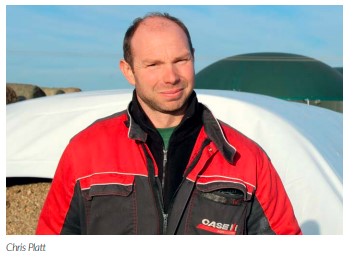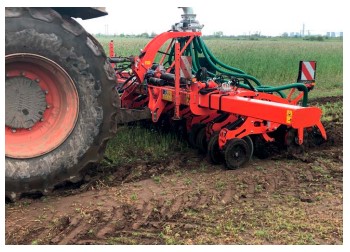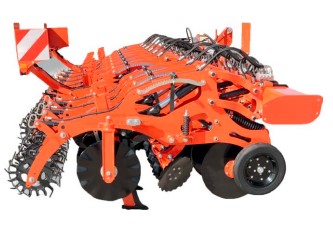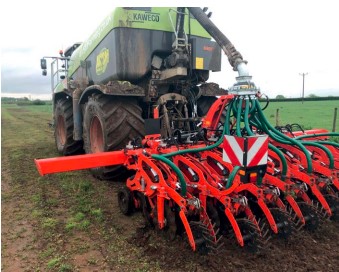STRIGER STRIP-TILL FOCUS

In response to the growing interest in minimal tillage cultivations, KUHN has developed its Striger strip-till range and will be showing the machine at Groundswell 2022.

Available from 4 to 12 rows, the Striger 100 is designed around a parallelogram system that allows all elements to operate independently, ensuring excellent ground following characteristics. To achieve the optimum conditions for seed germination within the cultivated row, the Striger 100 comprises six key elements:
1. Ground following is achieved using the hydraulic parallelogram and the gauge wheels, with each element being independent of the frame and the other elements.
2. The opening disc cuts through any plant residues and creates a slot ready for the leg. As an option, a corrugated disc can be fitted which offers a better expansion of the furrow before the leg passes through.

3. Debris clearers remove any residue from the seed furrow to provide a clean seedbed. They can be lifted out when work is resumed in spring.
4. The leg and point cracks and loosens the seed furrow to allow good development of the roots. Working depth can be adjusted between 7 and 30cm without tools. To prevent soil ingress from the inter-row, the leg is independent from the deflector discs.
5. The deflector discs channel the flow of soil while creating a fine tilth. The inter-row remains intact and weed emergence is significantly reduced.
6. The rear press wheels reconsolidate the seedbed and avoid cavities in the seed furrow. The pressure is adjustable, and the press wheels can be raised during a pre-winter pass.

The Striger 100 can be adapted to work effectively in all conditions and can accommodate liquid, solid or slurry fertiliser applications. It can be used with varying inter-row widths and with a wide choice of working parts and equipment. It is available in 3m, 3.50m, 4.40m and 6m formats.
Yorkshire farmer, Chris Platt has improved soil health, reduced labour and fuel and saved time by choosing to strip-till his land. He has also introduced a way to use the machine to inject liquid digestate from his anaerobic digester before drilling maize.
Using the Striger, he makes only one pass before drilling maize which has brought huge time, fuel, and labour savings to the farm. “It is our primary crop, so any economies we can make will all be seen when it comes to harvest. We used to spread the digestate on the land first then plough and then do another pass with a power harrow before being able to drill. To drill he uses an 8-row KUHN Maxima TI L-E and alters the row spacings to enable it to follow the 6-metre Striger. “I can easily alter the row spacings from 750mm to 500mm. I have found this increases yield because the crop is competing for space, but still dies off in time for harvest. In the season to come we are going to use 12 rows rather than 8. This will make it slower, but we will still do more in the same time. 12 outlets will make it easier to regulate the slurry too because we will have more outlets to apply into.”

The one pass system also conserves moisture which is important when he moves from the water-hungry rye to maize in the summer. Making decisions on the farm has been made increasingly difficult by fluctuations in the weather. “2018 was dry, and we had to irrigate immediately after planting the maize. However, the one pass system conserves ground moisture, reduces machinery and cuts the reliance on labour by four men. This means I no longer need to work in slurry after a contractor has applied it, which helps to keep moisture in the soil.” The Striger has also helped Mr Platt to reduce the amount of diammonium phosphate (DAP) that he uses, because he is able to apply liquid digestate more accurately. “By using more liquid digestate we have reduced our DAP inputs. 30 cubic metres per hectare was the figure we settled on and my agronomist was very impressed with the way the Striger got the strips just right. He subsequently calculated that when we were spreading conventionally, we were losing 30% of the digestate compared to injecting it with the Striger.”
In the future he is looking to further utilise the Striger for oilseed rape (OSR) cultivation. “Growing OSR is becoming more attractive, and it will make use of the Striger in the autumn. I can use it to cultivate a harvested wheat field, and OSR can take more slurry which will help us to be more efficient as the windows for applying slurry are shorter,” he concludes.